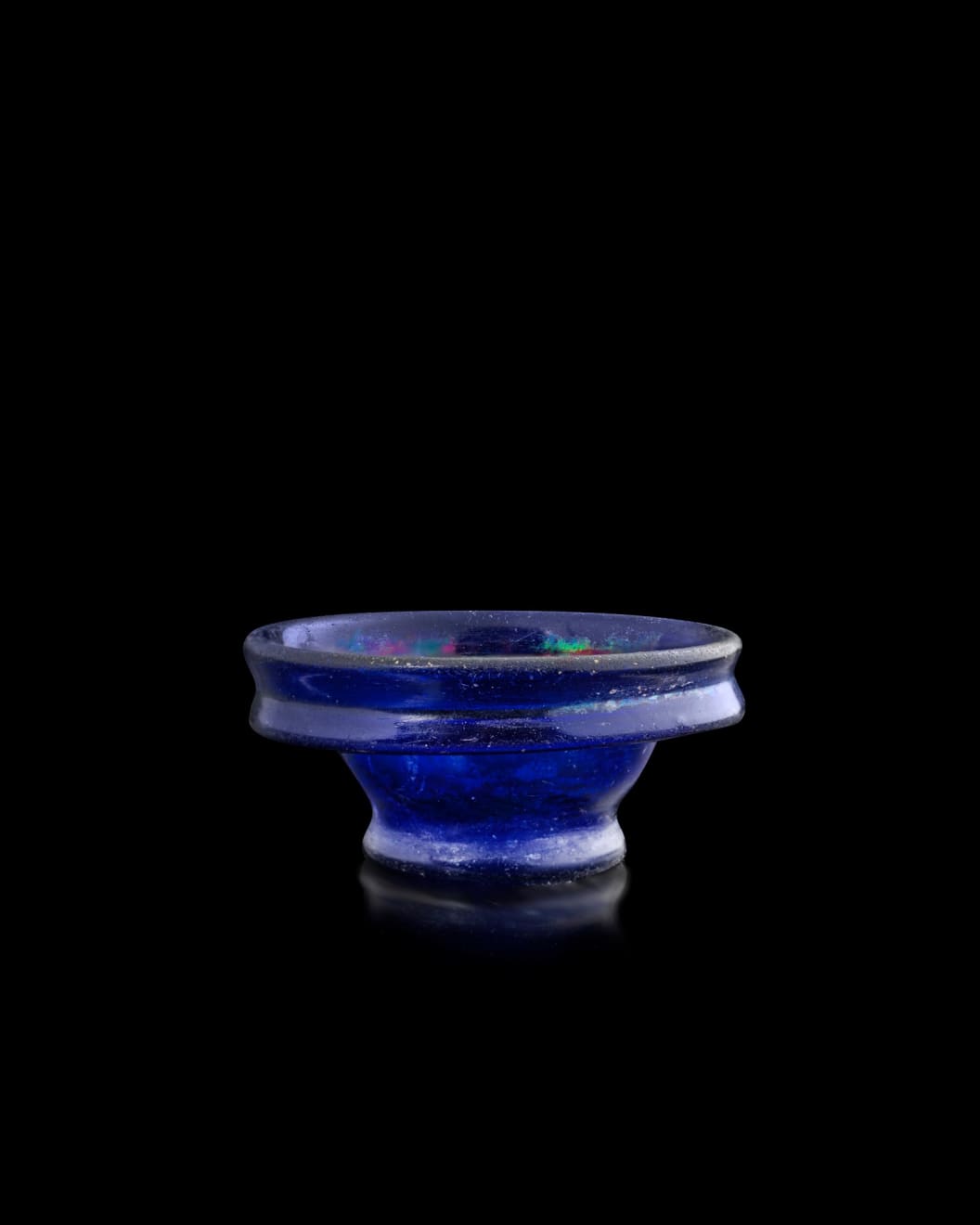Roman
A small Roman cobalt blue glass acetabulum cup, Eastern Mediterranean or Italy, circa 1st century AD
Glass
Diameter: 5.3 cm
The free blown dark blue glass hemispherical cup with high protruding rounded rim and folded flange. Inside the rim the wall curves in creating a narrow ledge. Set on a...
The free blown dark blue glass hemispherical cup with high protruding rounded rim and folded flange. Inside the rim the wall curves in creating a narrow ledge. Set on a pad base with no pontil mark.
Condition
Intact. Minor scratching and surface wear, with some iridescent weathering. There is a Nico Bijnsdorp collection label 276 on the underside.
Condition
Intact. Minor scratching and surface wear, with some iridescent weathering. There is a Nico Bijnsdorp collection label 276 on the underside.
Provenance
Millon & Associés, Paris, 22 June 2012, lot 885Nico F. Bijnsdorp Collection, the Netherlands, acquired from the above
Literature
These vessels, known as acetabulum, were named from the Latin word acetum meaning vinegar and abulum the suffix denoting a small vessel. As today, the Romans believed vinegar was good for the constitution and such cups served as tableware to serve (vinegar) sauces. They were also used as a measure: 0,068 litre (Hilgers 1969). They are closely related to the cast monochrome and mosaic patella cups.This vessel belongs to Isings form 69a and Vessberg pyxis type B.II. For examples of the type cf. S.B. Matheson, Ancient Glass in the Yale University Art Gallery, Yale, 1980, p.36-7, no. 106 and D. Whitehouse, Roman Glass in The Corning Museum of Glass, vol.1, Corning, 1997, 84-88, particularly nos. 117-8
